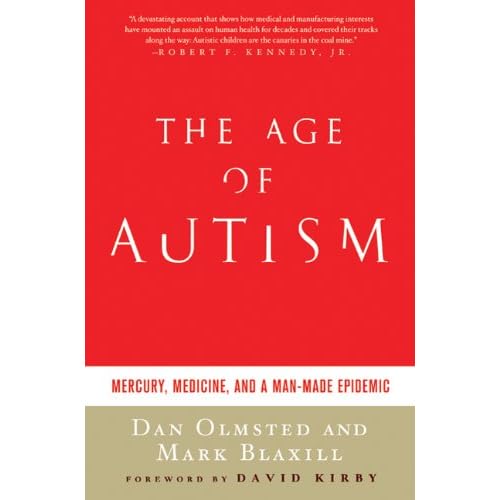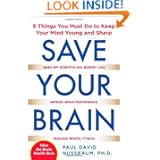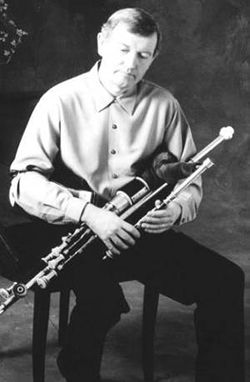Archive for March, 2011
 “The Age of Autism.” ~ Olmsted & Blaxill
“The Age of Autism.” ~ Olmsted & Blaxill

THE AGE OF AUTISM: MERCURY, MEDICINE AND A MAN-MADE EPIDEMIC
Dan Olmsted (Author), Mark Blaxill (Author)
Image and text above from: http://www.amazon.com/Age-Autism-Medicine-Man-made-Epidemic/dp/0312545622/ref=sr_1_1?s=books&ie=UTF8&qid=1301461231&sr=1-1
Wednesday, March 30, 2011. Today I am grateful for those who have the courage to warn us we are “fouling our own nest,” as they say of careless birds, eh? Dan Olmsted and Mark Blaxill are among the number warning us. ~ Doc Meek
Here is what one reader has to say about Olmsted’s and Blaxill’s book (review from amazon.com):
The content of this book is a bit different than what this reviewer had expected. Much of the material presented here can actually be read apart from what the authors discuss about autism, even though autism is one of the core elements in some areas of the text, comprising perhaps about one-third of the book. In reading some of the reviews here, as well as the great…
 “Field trips can enhance learning.” ~ Doc Meek
“Field trips can enhance learning.” ~ Doc Meek

Image by somenametoforget
Image from: http://langwitches.org/blog/2009/04/14/what-is-in-a-fieldtrip/
Tuesday, March 29, 2011. Today I am grateful for those who labor to bring teachers ideas they can use to increase their effectiveness. ~ Doc Meek
Melissa Kelly
Image above and text below from: http://712educators.about.com/b/?nl=1
Here is the email message I received from Melissa Kelly recently:
| Secondary Education |
|
|||||||||||
Thank you, Melissa Kelly, for helping teachers to help their students! Doc Meek, Tuesday, March 29, 2011, Sherwood Park, Alberta, CANADA |
 “Learn about GIRL UP from Gina.” ~ Doc Meek
“Learn about GIRL UP from Gina.” ~ Doc Meek
MASSA
I’m 16 years old. She’s 14. My name is Karina. Her name is Massa. I live in Carpinteria, California. She lives in Todee, Liberia. We’re half a world away and our lives are dramatically different, but we’re both girls who have our entire futures before us. READ MORE
Image and text from: http://www. GirlUp.org
Monday, March 28, 2011. Today I am grateful for the Girl Up campaign by the United Nations Foundation. – Doc Meek

“UNITING GIRLS TO CHANGE THE WORLD”
See “Girl Up” video by Gina Reiss-Wilchins, Director of “Girl Up,” on YouTube: http://www.youtube.com/watch?v=Fcp_FbVF1JU
|
Hi Doc Meek, It’s taken me a few weeks to settle in at the UN Foundation, and now it’s finally time to introduce myself to you — I’m Gina, the new Girl Up Campaign Director! From the moment I heard about Girl Up and the amazing things you all are doing to unite for girls around the world, I was hooked and knew this was the job for me. Of course my 4-year-old daughter Dylan had to approve of the choice too, as you’ll see in the video below. http://www.youtube.com/watch?v=Fcp_FbVF1JU
You’ve all done such inspiring work already, and I’m looking forward to the rest of 2011 and beyond with the Girl Up and UN Foundation teams, our Teen Advisors, Champions, partners, and YOU! Thank you, Gina Reiss-Wilchins, Director of Girl Up P.S. I’d love to hear from you about how you’re supporting Girl Up and your ideas to make the campaign even better for you – send me an email or write me a note on the Girl Up Facebook page! |
…………………………………………………………………..
I did send Gina Reiss-Wilchins an email:
“Gina Reiss-Wilchins, Director of Girl Up” <greiss-wilchins@unfoundation.org>
Dear Gina,
I am delighted that you are promoting the “Girl Up”program.
I am delighted to be putting up “Girl Up” information on my blog website: https://docmeek.com
You can click on the specific post by title hereunder:
“Learn about GIRL UP from Gina.” ~ Doc Meek
This is the second posting of Girl Up on THE LEARNING CLINIC WORLDWIDE blog. Here is the first posting by title:
“Learn ‘Girl Up’ by the UN Foundation.” ~ Doc Meek
Blessings and Gratitudes,
Doc Meek
P.S. We all love seeing your 4-year old daughter Dylan on YouTube with you!
Doc Meek, Mon, Mar 28, 2011, Sherwood Park, Alberta, CANADA
 “Behavior” versus “the condition.” ~ Doc Meek
“Behavior” versus “the condition.” ~ Doc Meek

| Image from: http://childrensbooksguide.com/general/i-always-always-get-my-way |
Friday, March 24, 2011. Today I am grateful for the distinction between “behavior” and “the condition.” This has proven to be controversial so all the more worthy of presentation here.
When a child has some kind of “condition” such that his/her behavior is problematic or unpredictable, there is a tendency to not be able to make the distinction between “the behavior” and “the condition.”
For example, the emotionally unstable child (or the autistic child) may have an “emotional outburst” or a “temper tantrum” and scatter their basket of crayons/coloring books (whatever) all over the floor by throwing them off the table or desk.
There is a tendency for responsible adults (parents, teachers, teacher aides, caregivers) to “excuse” the behavior because they feel the behavior is is “caused” by “the condition” from which the child is suffering. And it well may be.
And love, care and concern for the child in relation to his/her condition often causes hesitation as to the appropriate response.
Regardless of what the “cause” is though, the child needs some realistic feedback, usually immediately. (Some advocate waiting until the child “cools off” a little and is not so “emotional” and their is merit in this in some cases.) To “excuse” the behavior out of love, care or concern is not usually helpful to the child long-term. Immediate feedback is usually the most helpful to the child long-term.
Almost always, the need is for the child to receive immediate feedback about his/her behavior, irrespective of his/her “condition.”
So in the case of the emotional scattering of crayons, books, toys, whatever, the adult should say to the child authoritatively, “Pick them up and put them back.” If the child is too young and or emotional to respond promptly, the adult takes the child’s hands in his/her own hands, and helps the child pick up the scattered items, much like the operator of a crane might make the machinery “do the right thing” by direct handling of the controls. Or perhaps it is more like a puppet show operator moving the puppets by direct action.
This is the way that the child moves most rapidly and appropriately towards more “responsible behavior” even if the child is not at the moment capable of responding appropriately on his/her own.
Here’s the catch though. The adult has to be calm. No angry yelling and grabbing of the child in anger will do the job. (This is because, obviously, the adult is now out of control and not behaving appropriately and the negative example is no help at all to the child, regardless of how the adult feels about the situation emotionally.)
If the adult calmly and dispassionately takes the child’s hands in his/her own and moves the child’s hands in such a way that the child’s hands grasp the scattered objects one by one, however awkwardly, and restores them to their place, the adult has “won the day,” regardless of how upset the child is.
It is easier (and far quicker) for adult and child to “behave” their way to a new set of behaviors, than it is for them to “discuss” or “believe” or “theorize” their way to a new set of behaviors.
What do you think?
Doc Meek, Fri, Mar 25, 2011, Sherwood Park, Alberta, CANADA
 “The 3 things I learned in ICU.” ~ Tanya Meek, R.N.
“The 3 things I learned in ICU.” ~ Tanya Meek, R.N.
The Little ICU Book [Paperback]
Paul L. Marino (Author), Kenneth M. Sutin (Contributor)
Image/text above from: http://www.amazon.com/Little-ICU-Book-Paul-Marino/dp/0781778239/ref=sr_1_5?s=books&ie=UTF8&qid=1300763953&sr=1-5
Thursday, March 24, 2011. Today I am grateful for my daughter, Tanya Meek Nielson RN, who does what I could not do.
She works the long 12-hour overnight shifts in the Neurological ICU (Intensive Care Unit) at the University of Alberta Hospital in Edmonton, Alberta, Canada. Steady nights. I could do the long hours. I could not do the constant battle with death, and death itself.
Such Neurological ICUs care for the most dramatically ill or injured patients, often victims of sudden severe accidents.
“The Three Things I Learned while working in the ICU,” by Tanya Meek:
(1) My life is not so bad.
I can walk, I can talk, I can think. I can move forward with my life, no matter how bad my personal problems are.
(2) Your life can change in an instant.
One minute you are a bright muscular young man/woman, thrilled with your work and your social life; the next minute you are a bag of fluids that may or may not survive the night, let alone the week
(3) There are worse things than death.
Often the injury and damage to the patient is so great that, despite the fact everybody is initiating and voting for medical miracles, and everybody is rooting for you like mad, death may be the greatest triumph.
After all is said and done.
Thank you, Tanya Meek Nielson, for sharing your critical care experience with us!
Doc Meek, Thurs, Mar 24, 2011, Sherwood Park, Alberta, CANADA
 “The naked brain.” ~ Richard Restak, M.D.
“The naked brain.” ~ Richard Restak, M.D.
The Naked Brain: How the Emerging Neurosociety is Changing How We Live, Work, and Love [Paperback]
Richard Restak M.D. (Author)
4.3 out of 5 stars See all reviews (9 customer reviews) | Like(0)
|
||||||||
| In Stock. Ships from and sold by Amazon.com. Gift-wrap available. Above book image/text from: http://www.amazon.com/Naked-Brain-Emerging-Neurosociety-Changing/dp/1400098092/ref=sr_1_1?s=books&ie=UTF8&qid=1300762657&sr=1-1 |
Wednesday, March 23, 2011. Today I am grateful that some people take large chunks of time and energy out of their lives in order to organize large amounts of knowledge into a relatively small space for me to read in a book.
Here is what one reader had to say about THE NAKED BRAIN by Dr Restak:
5 out of 5 stars We think less than we think
Did you know that scientist estimate that only 5% of a normal person’s actions are decided consciously? The rest are results of automated processes that make up the so called cognitive unconscious. Civilisation advances create an ever increasing repertoire of human actions that are executed automatically as humans move their conscious mind to be preoccupied with more…
Above review text from: http://www.amazon.com/Naked-Brain-Emerging-Neurosociety-Changing/product-reviews/1400098092/ref=dp_top_cm_cr_acr_txt?ie=UTF8&showViewpoints=1
Thank you, Dr Richard Restak, for helping us know ourselves better and manage our brains better!
Doc Meek, Wed, Mar 23, 2011, Sherwood Park, Alberta, CANADA
 “Learn healthy brain lifestyles.” ~ Doc Meek
“Learn healthy brain lifestyles.” ~ Doc Meek
A Proactive Program to Preserve Your Life Story
Your Brain Health Lifestyle – Paperback (Mar. 4, 2009) by Dr. Paul Nussbaum
TUESDAY, MARCH 22, 2011. Today I am grateful for Dr Paul Nussbaum, who is telling us that brain health needs attention to 5 major necessities:
PHYSICAL ACTIVITY
NUTRITION
SOCIALIZATION
MENTAL STIMULATION
SPIRITUALITY
Save Your Brain: The 5 Things You Must Do to Keep Your Mind Young and Sharp – Paperback (Mar. 19, 2010) by Paul Nussbaum
“I was interested to read in the Globe and Mail that people with advanced Parkinson’s cannot walk but can ride a bicycle. The brain is interesting.
“The book starts with a survey to see how good you are on brain stuff. It includes questions on exercise, diet etc. I was surprised I scored ‘poor.’ Perhaps that is partly because I am a tough self grader but partly because the questions did not allow me to use alternatives that I do that are likely comparable. EG – dancing once per week (which I do not do) is surely comparable to martial arts.
“Of course it has a technical section on how the brain works and what it is. And [a] part convincing me that I need to work on saving my brain.
“The 5 things to do to Save Your Brain:
1 – Socialize. Basic human interaction.
2 – Exercise. 25% of the blood circulation goes to support the brain.
3 – Mental Stimulation. Use it or lose it. Learn something new always. Challenge yourself.
4 – Spirituality. He includes “mental rest” in this category.
5 – Nutrition. The obvious – eat like your mom told you to and use supplements if you cannot. He is also a big advocate of fish oil.
“These are all obvious and not new. He did not emphasize the things not to do (like drugs, alcohol and boxing). It was a good reminder of things I already knew. ” – Jim Estill (New York)
 “Think Smart.” ~ Richard Restak, M.D.
“Think Smart.” ~ Richard Restak, M.D.
 |
| Formats | Buy new | New from | Used from | ||
|---|---|---|---|---|---|
|
Only 4 left in stock – order soon.
|
$16.00 | $6.40 | $3.13 | $2.49 | |
| Kindle Edition Auto-delivered wirelessly | $9.99 |
I had a boss who used to yell at us “If you don’t think too good don’t think too much”. Just like a Wall Street hero, no? Anyway, he couldn’t be more wrong. This fine book issues from many years of research to proclaim that we truly can become smarter at a profound yet practical level. We can dwarf the IQs so many of us were saddled with as children. There is nothing…
 “Music opens the channels of learning.” ~ Doc Meek
“Music opens the channels of learning.” ~ Doc Meek
15 minutes Catching Up With Rex by CBS 88,713 views
Images from: http://www.youtube.com/watch?v=cCF1xSgyKXg&feature=relmfu
Friday, March 18, 2011. Today I am grateful to know that a child who was labeled severely autistic was found later to respond to music, even though he was super senstive to sounds and would hold his ears when exposed to singing.
Of course every autistic child does not grow up to be a musical genius. That is not the point of this article.
I use music in my private practice (Baroque music, about 60 beats per minute) to help open the channels of learning for children with a large array of learning problems.
Sometimes the music is simply background music in a classroom that helps almost every child in that classroom to learn more easily and achieve more.
Thanks to those who know, and who have taught us, that music opens the mind and soul!
Doc Meek, Fri, Mar 18, 2011, Sherwood Park, Alberta, CANADA
P.S. Here’s the book about Rex Lewis-Clack by his mother Cathleen Lewis:

Rex: A Mother, Her Autistic Child, and the Music that Transformed Their Lives – Hardcover (Oct. 28, 2008) byCathleen Lewis
P.S.S. Somebody told me that it is the “Ides of March” today. I know the reference is to Shakespeare and I do not know the full import of the phrase.
Can anybody “out there” give us some more information on the “Ides of March?”
 “I love Irish music & dance.” ~ Doc Meek
“I love Irish music & dance.” ~ Doc Meek
Girls playing Irish folk music during a St Patrick’s Day parade in Dublin, 2010; image/caption from: http://en.wikipedia.org/wiki/Saint_Patrick’s_Day
Thursday, the 17th of Ireland, 2011. Today I’m feeling a great Irish sense of gratitude for me late fither [my Dad], James Collins Meek II, born in Belfast, Ireland, and after whom I was named. His name is one of my cherished Irish legacies. – James Collins Meek III (Doc Meek)

The Chicago River is dyed green each year for St Patrick’s Day celebration, shown here in 2005; image/caption from: http://en.wikipedia.org/wiki/Saint_Patrick’s_Day
Thank you Dad (James Collins Meek II) for my name and for my delightful Irish heritage!
Doc Meek (James Collins Meek III), Thurs, Mar 17, 2011, Sherwood Park, Alberta, CANADA

















